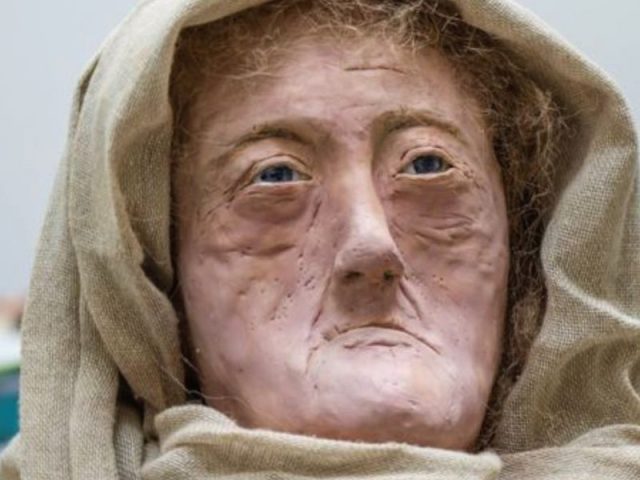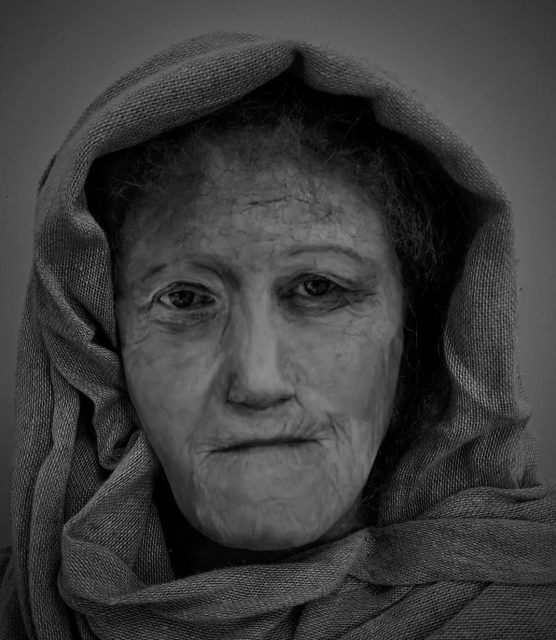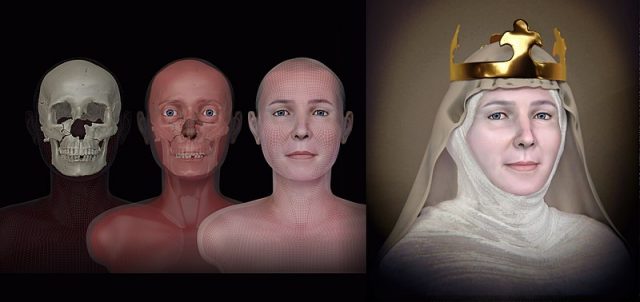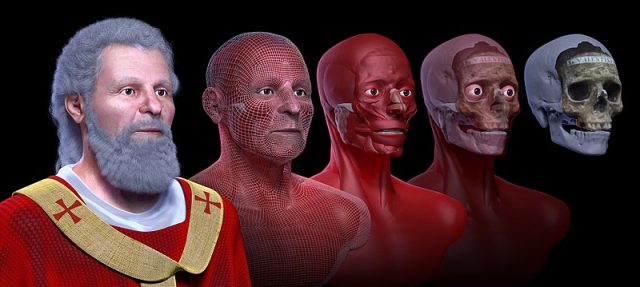Historical figures getting the facial reconstruction treatment is becoming an exciting new field. “Hilda” an ancient Druid priestess has now become a part of that. In 1833 the Phrenological Society of Edinburgh was given one of the skulls of six “Druids of the Hebrides” which is now owned by University of Edinburgh’s Anatomical Museum. The skull has not given up its secrets because carbon dating was not possible but the notes that accompanied the skull state that the Celtic woman died anywhere between 55 BC to 400 AD and was an unprecedented sixty years old. We may now know what she looked like thanks to Karen Fleming, an MSc Forensic Art and Facial Identification student at the University of Dundee.
Hilda, as she has been named, probably lived on the Isle of Lewis in the Outer Hebrides off the northern coast of Scotland near the modern town of Stornoway. Her skull shows that she had lost all of her teeth before she died but the fact that she may have lived so long tells us that she was one of the privileged class as the life expectancy for women at that time wasn’t much over thirty years old.
It is believed that Hilda was a Druid, an ancient priestess or conjurer of magic in the Iron Age British Isles. According to myths and texts written in medieval times women priests were often called bandrui. Professor of history at Bristol University, Ronald Hutton, doesn’t believe that female druids had any authoritative places in Celtic society but acknowledges that druids were widespread and while some may have been of the elite members of their towns, many were just everyday people, according to Newsweek.

Fleming recently unveiled the 3D wax recreation of Hilda’s face for Scotland’s annual Masters Show which showcases local artist’s talent. According to dundee.ac.uk, this summer’s European heat wave became a challenge for Fleming and Hilda. “It’s funny to say it now but I had to keep parts of Hilda, like her wax modelled ears, in the fridge for most of the summer. As a mature student who commutes from Edinburgh, I often had to keep her cool in the car, strapped up in the passenger seat…”

Students taking the course at Dundee learn facial anthropology and identification, using two and three-dimensional facial reconstruction, age progression, craniofacial superimposition, post-mortem depiction and composite art from forensic art experts from Duncan of Jordanstone College of Art and Design and the Centre for Anatomy and Human Identification.
Much of what is learned is used by law enforcement agencies and private companies. Students must learn how to recreate facial muscles and learn the mathematical formulas that help them determine the placement of the lips and ears before the skin is applied. Any injuries or deformation cannot be determined unless the skull bones were affected. CT scanning, digital scanning and interpretation are also learned.

Facial reconstruction has become extremely popular with historians as it allows us to see how important people in history truly looked. We can now see the faces of English monarchs Queen Elizabeth I and King Richard III and Scottish King Robert the Bruce who had two facial reconstructions done – one with leprosy which he may have had and one without. As well a famous reconstruction was done for St. Valentine.

The Scottish archeological site, Achavanich, has yielded the skull of a Bronze Age woman dubbed Ava who died during her late teens or early twenties about three and one half thousand years ago. A facial reconstruction shows an attractive young woman who would have blended in with modern faces quite easily. Other reconstructions were done on the faces of the Egyptian boy king Tutankhamun, St. Nicholas, Peruvian Lord of Sipán from two thousand years ago, Robespierre of the French Revolution and Meritamun, an ancient Egyptian noblewoman who died about two thousand years ago.
Check out the facial reconstruction of Queen Elizabeth I here
Egyptian Pharaoh Cleopatra VII was also done but because the final resting place of Cleopatra and her lover, Marc Antony, has yet to be found, forensic reconstruction was done using coins stamped with her image and existing statues which may be unreliable. As Cleopatra’s heritage was Greek many may have given her more Egyptian features.
